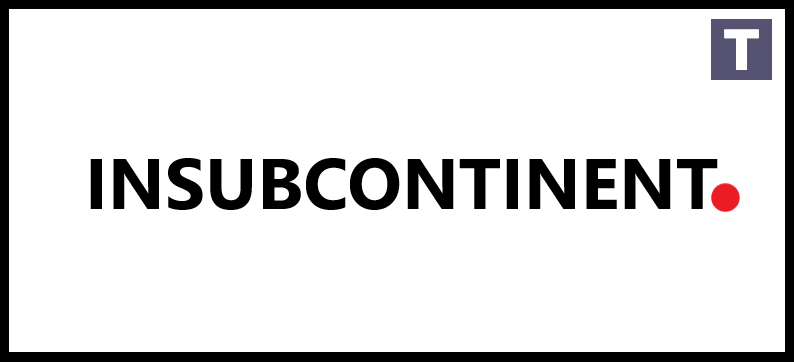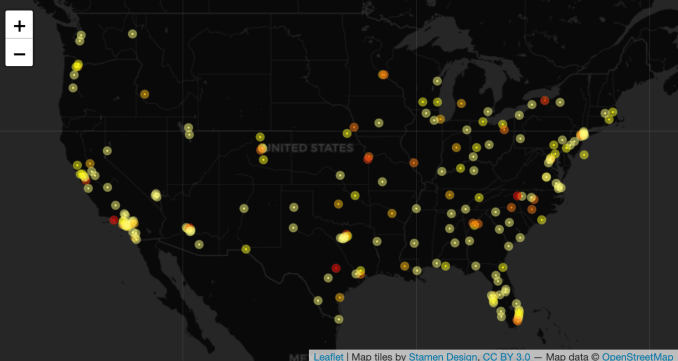Music
Trailers
DailyVideos
India
Pakistan
Afghanistan
Bangladesh
Srilanka
Nepal
Thailand
StockMarket
Business
Technology
Startup
Trending Videos
Coupons
Football
Search
Download App in Playstore
Download App
Best Collections
Technology
While plenty of tech stocks have seen their market caps dive in the past month, Groupon has taken a harder hit than most. The companyshare price has dropped more than 70% in the past five weeks.
The reckoning came for Grouponleadership today with both CEO Rich Williams and COO Steve Krenzer ousted. In an announcement, Groupon shared that both execs would be pushed out of their roles and that GrouponPresident of North America Aaron Cooper would serve as interim CEO.
While the impact of COVID-19 on retail across the country will certainly further negatively affect Groupon moving forward, the company was in dire trouble weeks before the crisis fully took root stateside. Groupon took a beating on its Q4 earnings report, where it widely missed expectations and showcased seriously declining revenues.
The companyboard will be leading the search for a full-time chief executive. For the time being, Cooper will be tasked with the company through an undoubtedly rough period as many of its current and potential customers close up shop.
&The disruption created by the global pandemic, however, is significant, and our immediate goal is to help millions of Groupon merchants, customers and employees navigate the massive challenges they face,& interim CEO Aaron Cooper said in a statement.
Grouponstock was down a hair on the news, though it has seen some upward movement from its recent all-time low even as the rest of the market has tanked. One wonders whether investors believe that the entire market enduring a crisis could give the company an opportunity to take stock of its future or if they simply think they found the share pricebottom.

- Details
- Category: Technology Today
Read more: Groupon axes CEO and COO as company seeks to install a healing during a crisis
Write comment (92 Comments)
&Little Fires Everywhere,& a new miniseries on Hulu, can be hard to watch.
Based on Celeste Ngnovel of the same name, it takes place in the planned community of Shaker Heights during the 1990s, where the arrival of artist Mia (Kerry Washington) and her daughter Pearl (Lexi Underwood) sets something into motion that (we&re told in the opening scene) will eventually result in a fire that burns the lavish home of the wealthy Robinsons to the ground.
While the show has plenty of distinctive characters, it centers to a large extent on the prickly relationship between Mia and Elena Richardson (Reese Witherspoon). Every scene between them feels fraught, as Elenaawkward and condescending attempts to prove that shea good person (and a not racist) are repeatedly rebuffed.
For reasons that it would be too spoiler-y to disclose here, the two of them eventually find themselves in conflict, and their children, along with Elenahusband (itgenuinely mind-blowing to see Joshua Jackson — Pacey from &Dawson Creek& — as a 40-something dad), get pulled in as well.
On todayepisode of the Original Content podcast, we review &Little Fires Everywhere,& laying out all the ways that the showinitial episodes impressed us. We also offer some general recommendations for what to stream while you&re stuck at home.
You can listen in the player below, subscribe using Apple Podcastsor find us in your podcast player of choice. If you like the show, please let us know by leaving a review on Apple. You can also send us feedback directly. (Or suggest shows and movies for us to review!)
And if you&d like to skip ahead, herehow the episode breaks down:
0:00 Intro 1:09 Streaming recommendations 11:15 &Little Fires Everywhere& review 39:34 &Little Fires Everywhere& spoiler discussion (spoilers for first three episodes)
- Details
- Category: Technology Today
A new survey conducted by the Pew Research Center shows a COVID-19 information divide between people who mostly get their news from social networks and those who rely on more traditional news sources.
Pew surveyed 8,914 adults in the U.S. during the week of March 10, dividing survey respondents by the main means they use to consume political and election news. In the group of users that reports getting most of their news from social media, only 37% of respondents said that they expected the COVID-19 vaccine to be available in a year or more — an answer aligned with the current scientific consensus. In every other sample with the exception of the local TV group, at least 50% of those surveyed answered the question correctly. A third of social media news consumers also reported that they weren&t sure about the vaccine availability.
Among people who get most of their news from social media, 57% reported that they had seen at least some COVID-19 information that &seemed completely made up.& For people who consume most of their news via print media, that number was 37%.
Most alarmingly, people who primarily get their news via social media perceived the threat of COVID-19 to be exaggerated. Of the social media news consumers surveyed, 45% answered that the media &greatly exaggerated the risks& posed by the novel coronavirus. Radio news consumers were close behind, with 44% believing the media greatly exaggerated the threat of the virus, while only 26% of print consumers — those more likely to be paying for their news — believed the same.
The full results were part of PewElection News Pathways project, which explores how people in the U.S. consume election news.
- Details
- Category: Technology Today
The impacts of telecommuting, shelter-in-place laws and home quarantines resulting from the COVID-19 outbreak are starting to impact broadband speeds across a number of U.S. cities, a new report has found. According to broadband analysis site BroadbandNow, 88 out of the top 200 most populous U.S. cities analyzed have now experienced some form of network degradation over the past week, compared with the 10 weeks prior, as more people are going online to work from home, video chat and stream movies and TV to keep themselves entertained. In a small handful of cities over the past week, there have even been significant degradations with download speeds dropping more than 40%, compared with the 10 weeks prior.
Itnot necessarily the areas hit hardest by the spread of the novel coronavirus that are experiencing the worst problems.
Cities including LA, Chicago, Brooklyn and San Francisco have seen little or no disruption in download speeds, the report claims. Seattle is also holding up well.
But New York City, now considered the epicenter of the virus in the U.S., saw download speeds drop by 24% last week, compared to the previous 10-week range. That said, NYC home network connections, which have a median speed of nearly 52 Mbps, are managing.
The good news is that in the majority of markets, network speeds are holding up.
But of the 88 out of 200 cities that saw declines, more than two dozen saw dips of either 20% below range or more, the data indicates.
These include:
Austin, TX (-44%); Charlotte, NC (-24%); Fayetteville, NC (-22%); Fort Lauderdale, FL (-29%); Hialeah, FL (-21%); Houston, TX (-24%); Irvine, CA (-20%); Jersey City, NJ (-25%); Kansas City, MO (-25%); Lawrenceville, GA (-24%); Littleton, CO (-22%); Marietta, GA (-29%); Miami, FL (-27%); Nashville, TN (-20%); New York, NY (-24%); Omaha, NE (-24%); Overland Park, KS (-33%); Oxnard, CA (-42%); Plano, TX (-31%); Raleigh, NC (-20%); Rochester, NY (-33%); St. Louis, MO (-21%) St. Paul, MN (-29%); San Jose, CA (-38%); Scottsdale, AZ (-32%); Washington, DC (-30%); and Winston-Salem, NC (-41%).
Three cities, in particular, were seeing serious network degradations of over 40%: Austin, TX (-44%), Winston Salem, NC (-41%), and Oxnard, CA (-42%). San Jose, CA was nearing this range, with a drop of 38%.

Internet service providers have been responding to the health crisis by suspending data caps, increasing base-level speeds and extending free access to low-income families during this time. But their ability to keep up with this level of high demand is being tested.
Streaming services, being one of the larger draws on bandwidth, have been lowering the quality of their streams to use less network capacity, as U.S. connectivity needs have grown. Yesterday, for example, YouTube announced it would default to SD connectionsto tame bandwidth demands. Amazon and Netflix have reduced stream quality in Europe. But despite record levels of network traffic in the U.S., Netflix hasn&t made any commitments to do the same in the U.S. Today, Netflix had an hour-long service interruption impacting some U.S. and European users.
Another area of concern is how well more rural areas will hold up with new stay-at-home and work-from-home orders in place. Often, these markets are only served by legacy technologies like DSL . So far, they&ve held up, BroadbandNow reports, but this could still change.

- Details
- Category: Technology Today
Medical biotech company Emergent BioSolutions is one of the many health industry players turning its efforts toward addressing the current global coronavirus pandemic. Their work includes a two-pronged effort to pursue plasma-based treatments that could help lessen the impact of COVID-19 on healthcare systems, with a fast-tracked development timeline that could see human clinical trials start as soon as this summer.
The company is simultaneously working on two different therapeutic approaches, including one that uses plasma (a liquid that is the majority component of blood) sourced from humans, and one that sources it from horses. Both involve development of antibodies consisting of different immune cells that all target the SARS-CoV-2 virus, which work by boosting the bodyexisting immune response in patients to fight off infection. The treatment based on human plasma would be suitable for use for patients who are hospitalized and showing severe symptoms, and also potentially for providing some measure of protection for at-risk people, including front-line healthcare workers, while the horse-derived version would be aimed specifically at addressing those severe hospitalized cases.
Plasma-based treatments (which involve purifying out the antibodies and concentrating the dose) are not new, and both of these therapies in development will leverage technologies, manufacturing processes and other infrastructure that Emergent BioSolutions has used in developing other FDA-approved plasma-based treatments for different diseases. Thatwhathelping it fast-track its work on solutions to address COVID-19, which could bridge the gap between where we are now and the year or more it will take to develop an effective vaccine.
&We looked at where we are in our platforms, and our ability to take some of our proven technologies and apply it to COVID-19,& explained Dr. Laura Saward, head of Emergent BioSolutionTherapeutics Business Unit. &On the therapeutic side, there were two areas we were really focused on. I think the opportunity to provide a therapy that would be a rescue therapy for patients in hospital, who are suffering from severe disease is definitely a need today, as well as the ability to go in and prevent people at risk from developing more severe disease.&
The goal, with both approaches, Dr. Saward said, is to attempt to reduce the burden suffered by the healthcare system, freeing up its resources to better address the coronavirus crisis. Thata similar end to the strategy of encouraging individuals to distance themselves physically from one another — health officials are hoping that, if these rules are properly observed, individuals can avoid being infected all at once and overwhelming the hospital system.
Therapeutics used in treatment of cases could be another key ingredient in a larger plan designed to mitigate the most dire projected effects of a global coronavirus pandemic. Especially when, as is the case with the treatments that Emergent BioSolutions is developing, there is already infrastructure in place that can help speed the development of these therapeutics.
&We have two platforms that we looked at, within the antibody therapeutics space, really looking at our existing infrastructure, and the manufacturing processes that we have as part of our overall platform for this approach,& Dr. Saward said. &You know, in the, in this situation, when we looked at these two platforms, they supported several FDA-licensed drugs, which, while it doesn&t give us the benefit of having some sense of dosing safety, we can certainly use that manufacturing process in a way where we&ve got our our common elements for manufacturing and controls and would help to support an FDA application.&
There has been plenty said about efforts by the FDA and other global health agencies to cut through red tape and speed the approval process around COVID-19. That includes everything from tests to treatments and vaccines. I asked Dr. Saward whatactually involved in fast-tracking something as sensitive and safety focused as approval for new therapeutics.
&We&ve always worked very closely with the regulators in understanding sort of what parts of those packages are common to our process,& she said. &As we bring a new drug through, we&re often able to leverage many of the same elements around the safety profile, the PK profile [basically how fast a drug is absorbed, metabolized, excreted, etc.] for the products, the manufacturing controls and assays that are validated — thatall common. What we&re changing, really, is just at the front end: The plasma thatgoing into that process will be specific to the COVID antibodies in this case.&
This ensures that while they can still ensure safety, they don&t need to do re-work that would otherwise be time-consuming for processes into which the FDA already has full visibility. Time and effort can focus on the stages of the drug development that are new, instead of on whatrepeated.
Thanks to its ability to leverage past work, Emergent BioSolutions is now working with a time frame that includes entering manufacturing by this summer, and then having products available in test clinics by end of summer. If all goes to plan, that means kicking off Phase Two testing in human patients by around late summer or early fall.
That may seem a long way off, but itactually a speedy timeline by therapeutics development standards. Saward says that sheseen the FDA evolve their thinking on data collection and dynamism in light of technological advancement, which has helped their collaboration with industry in getting needed treatments to market. In the meantime, that still means individuals need to do their part to provide Emergent and others working on these solutions the time they need for proper development and testing, through actions like physical distancing and self-isolation.

- Details
- Category: Technology Today

As efforts to flatten the spread of COVID-19 pushes employees from their offices, remote work is undergoing a surge in popularity.
Well-known remote-work-friendly companies like Zoom have seen a rise in usage, while Slack has already reported that it is successfully converting new users into paying customers, which is pushing up its growth rate.
The pandemic is creating economic and social upheaval, but for a specific cohort of software companies that help distributed teams work together, itproven useful in business terms. But even before the outbreak of the novel coronavirus, execs from a standout project management company swung by TechCrunch HQ to chat with the Equity crew about their business and growth: Monday.com.
What does an interview with Monday.comEran Zinman (co-founder and CTO) and Roy Mann (CEO) have to do with COVID-19? Well, if remote-productivity-friendly services Slack and Zoom are seeing usage spikes amidst the changes, Monday.com is likely benefiting from similar gains. And during our chat with the companybrass, the pair told TechCrunch that their company had crossed the $130 million annual recurring revenue (ARR) mark by mid-February. Add in a COVID-19 usage boost and perhaps Monday.com (which doesn&t have a free tier) is seeing its growth accelerate.
Previously, Monday.com announced that it had reached the $120 million ARR mark, and TechCrunch had inducted it into the $100 million ARR club earlier this year.
Revenue expansion was not our only topic. We also chatted with the pair of execs about customer acquisition costs and how to a run a SaaS business without terrifying burn. The Monday.com crew had more news up their sleeve, like when they expect the unicorn to become cash-flow positive.
We&ve excised a larger-than-usual chunk of the interview for sharing, as therea lot to take in:
After the jump, we dig a bit deeper into the obvious IPO candidate
- Details
- Category: Technology Today
Read more: Monday.com surpassed $130M ARR prior to the remote-work boom
Write comment (100 Comments)Page 1118 of 1418

 15
15





